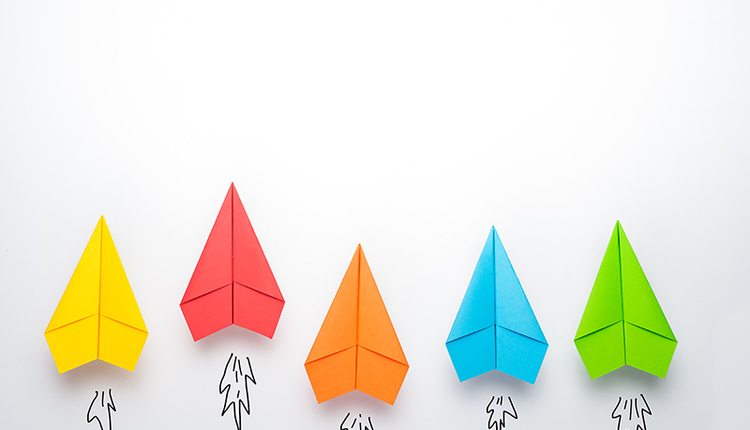Optimizing your warehouse to meet your business requirements has certainly taken a twist since COVID and social distancing have become a daily reality. Many of the existing issues are relevant; however, the way organizations execute and measure their successes have changed due to positive COVID testing. This certainly alters the return on investment calculation, which ultimately dictates what will be prioritized, funded, and implemented.
In today’s world, social distancing translates into spacing your warehouse operators far enough apart so not to transmit COVID. This is a direct contradiction to the previous “solution” of throwing labor at the problem.
Operators picking from rack, elbow to elbow, and maneuvering carts through aisles like an amusement park’s bumper car game is rampant. Flooding a zone(s) with people to offset peak periods, flash sales, and bad processes was very often the fix.
Today, utilizing the right type of automation, planning zones, and cells correctly can not only allow proper social distancing, but it will reduce labor requirements, lower the cost per pick, increase accuracy and customer satisfaction levels, all while reducing the risk of a Covid shutdown.
A Look at the Offerings
Keeping that in mind, it is wise to remember that not all automation is equal. The pre-COVID trend of utilizing automation that is flexible, lean, easy to use and allows a rapid deployment makes even more sense today. Very often these benefits translate into using robotics and autonomous mobile robots (AMRs). Equipment is not bolted to the floor. Paths and workflows can therefore be changed dynamically to meet evolving business requirements with its ever-changing environment.
Goods-to-Person AMRs can use existing shelving and store and retrieve totes to a workstation. These systems start incredibly simple with very few robots and handle hundreds of SKUs. They can also be scaled up to a much larger system, storing and retrieving million(s) of SKUs. Likewise, AMRs can deliver pallets or shelves with inventory to a workstation utilizing an integrated pick-to-light or augmented vision system and provide incredible batch picking efficiencies. These robotic systems are very scalable and can be deployed rapidly. Most importantly. they provide the much-needed social distancing.
Utilizing document inserters, automated bagging and boxing systems allow organizations to take control of their pack-out areas and reduce labor while increasing efficiencies.
Proper slotting can also be utilized to promote social distancing. In the old days (pre-COVID) proper slotting practices made sure you had the right SKUs located at the most optimum picking locations. Today that is true, but it can also be used to control where operators make their picks (helping to keep distance between them). For example, you can take your top SKUs and create multiple rapid-pick locations. So instead of having very few pick locations for the most popular SKUs, you can spread them out and control the number of pickers going to those locations. This type of slotting logic can increase pick speeds while keeping employees distanced. Likewise, moving to a pick and pass operation and consolidating downstream can make sense. But you ask, how do I convey the orders efficiently to the next zones? This historically has been done with conveyors but can also be done utilizing autonomous mobile robots.
Order and inventory accuracy is as critical as it has always been. Pick-to-light and voice have been key technologies for this, but the new augmented vision provides these benefits and more and at a lower cost. Augmented reality (AR), artificial intelligence (AI), and computer vision are integrated into a single device to provide visual instructions to the worker, enhancing productivity and reducing errors. It is also sometimes referred to as augmented vision order picking.
Implementing augmented vision allows an operator to wear AI glasses that will not only direct them to their next pick by displaying arrows but will then display a green box on the correct location. The operator touches the side of their glasses to verify the position, the quantity to pick, the SKU number. An image of the SKU can be instantly displayed to confirm the correct item has been picked.
WES, SKU, and More; Oh My!
Another pro tip to consider is re-evaluating your WMS process “wish list” using a Warehouse Execution Software (WES) lens. Virtually every operation has a list of applications, processes, reports, and more they wish their WMS would provide. Many organizations have reviewed these wish lists with their WMS provider and simply cannot find the budget for such large expenditures. This is always the case in tier one and most tier two providers.
Organizations are now realizing that by layering a WES software into their operations, they can not only get this wish list at a much lower cost but can also create additional operational efficiencies that drive the return on investment. Simply put, WES providers often work at far lower rates than the WMS providers.
When investigating the WES path, evaluate your business utilizing wave, waveless, or overlapping waves methodologies. The hype behind waveless picking is sometimes warranted, but many times its benefits are greater for the first 85% of the wave and taper off. Overlapping waves picking encompasses the benefits of both wave and waveless to increase efficiencies for 100% of the wave. This can be easily demonstrated by utilizing the WES emulator to prove the efficiencies.
SKU rationalization is another tip that is ageless, but more relevant today. Many operations have changed with the current COVID situation. Understanding your business and how it relates to your SKU population needs to be evaluated. SKU rationalization is the process of analyzing the impact to an organization that will come from adding, discontinuing, or maintaining a specific product or total product line(s).
The goal is to understand your inventory impact, and to use it to rationalize, or justify, the course of action that is required to add a product, discontinue it, or continue as is. At the center of SKU rationalization is the ability of an operation to understand the performance of its existing SKUs (a process also known as SKU profiling). By understanding how your existing SKUs are performing and what percentage of revenue they contribute, it is possible to determine which, if any, products can be discontinued without impacting your overall profitability, while also offering insights into how new (similar) SKUs may perform. With today’s events, this exercise can be more vital to profitability than ever before.
A truly comprehensive capacity analysis will evaluate the physical capacity of your infrastructure and facilities, your production or throughput capacity, and your mechanical capacity. With all the changes today, this exercise may be eye-opening. A capacity analysis is determining the capacity of your operation
Physical capacity of infrastructure and facilities shows how much space is available for work processes and storage of inventory. Production/throughput capacity is determining the peak throughput of all the systems in an operation (i.e., how many orders can be processed/fulfilled compared to demand). Mechanical capacity measures what the peak throughput of your specific equipment and technology is; for example, sorters, conveyors, palletization equipment, etc.
By better understanding how these various capacities compare to demand, you can identify inefficiencies, pinpoint areas for improvement, and implement technologies, processes, workflows, and systems to help achieve your requirements.
Looking at today’s new reality as well as your projections for mid and long-term requirements, it is vital to review and design systems, workflows and procedures that are synchronous to your business requirements and provide the needed return on investment.
Ed Romaine is VP of Marketing and Business Development for Conveyco. He can be reached at eromaine@conveyco.com or 860.589.8215 x129.
This article originally appeared in the September/October, 2020 issue of PARCEL.



















